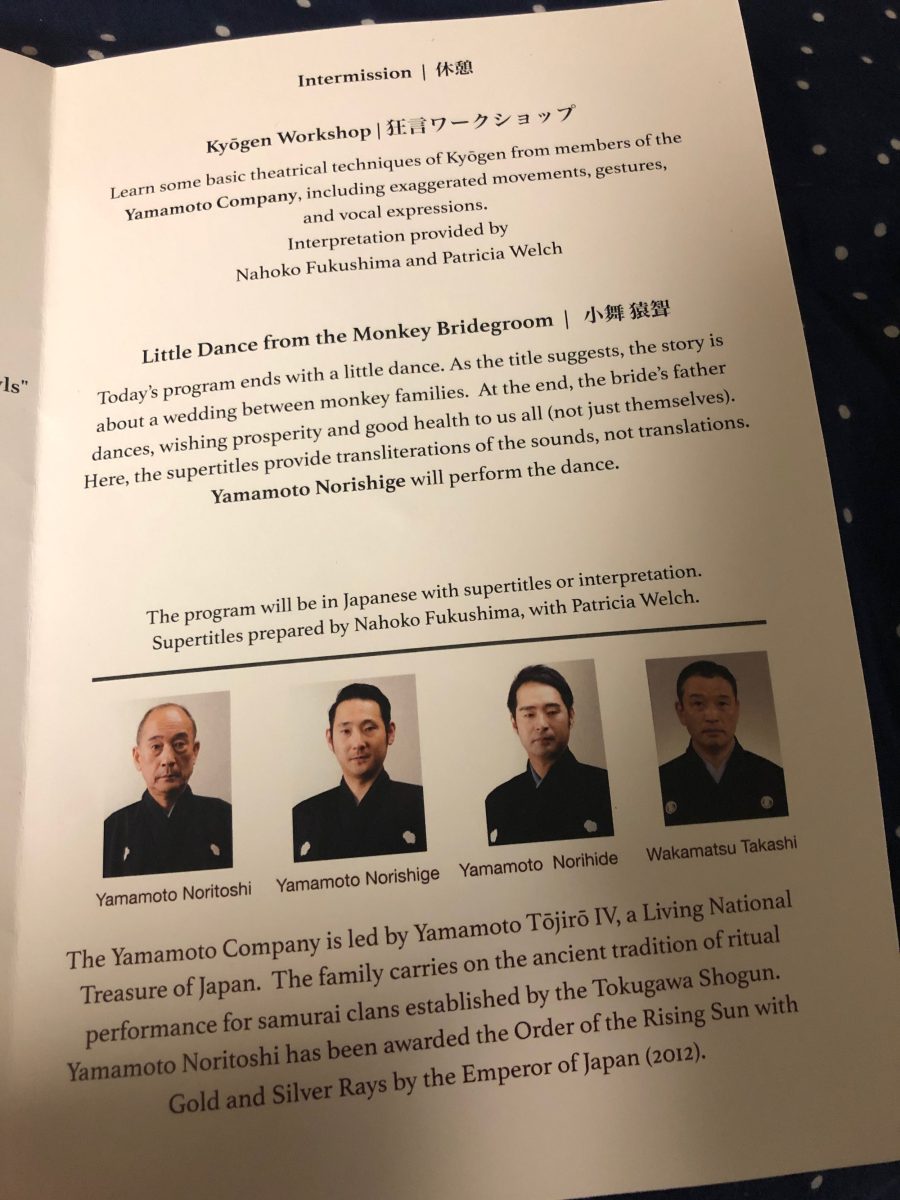Last Tuesday, Nov. 12, Hofstra University hosted a Kyogen Drama presentation and workshop in Monroe Lecture Center. Facilitated by the Japan Society in New York, the performance was a three-hour event, during which the members of the Yamamoto Tojiro Kyogen Company presented classic comedic skits in the Kyogen tradition.
The history of Kyogen drama dates to early Japan. Kyogen skits were generally farcical in nature and used as brief interludes during a Japanese Noh, which was a lyric drama. The skits are very minimalistic, devoid of set pieces or backdrops. The actors only utilize costumes and handheld prop pieces to enact their short scenes, relying on themselves more than any other production elements.
Traditionally, Kyogen was done to relieve the tension of the serious Noh and was parodical in nature. Over time, however, Kyogen developed into its own independent dramatic form. That form was what was presented to the students and faculty in Monroe Lecture Center last Tuesday.
The Yamamoto Company, a family-led group, performed three short skits, provided a workshop for the students and demonstrated how to put on a costume for performance. The skits, titled “Owls,” “Horizontal Singing” and “Little Dance from the Monkey Bridegroom,” were all conducted with three to four actors who spoke in deep, monotone voices. The simplistic tones they used enhanced the hilarity when contrasted with their funny dialogue. The skits were all simple plots easily understandable by little children and showcased absurd scenarios. There were also instances of beautiful chanting as well as traditional dancing.
The workshop featured exercises in Kyogen techniques. Students were taught how to walk, throw and cut vegetables in Kyogen fashion. The premise was to exaggerate the motions and add vocal effects, but there was a certain Japanese charm to it that is not replicable in Western drama.
The entire show was both culturally enriching and highly entertaining. The Yamamoto Company, recognized by the Emperor of Japan, was immensely talented and left Hofstra with a greater appreciation for Japanese culture as well as the dramatic arts.







